Reaching Dhankar:
Dhankar village is situated at an elevation of over 3,800 metres in the Spiti Valley. It is connected to the rest of the valley through a motorable road, which is good for small vehicle only. Schichling is a small village lying on the main road between Kaza and Tabo about 24 kms away from Kaza and 22 kms before Tabo. From here, there is a well paved branch road upto Dhankar,8 kms away. No public transport available on this branch road till Dhankar Village. To reach Dhankar, one has to either hire a taxi from Tabo or Kaza (Return Journey rate approx.1600 INR, 900 INR to drop at Dhankar) or to get a government bus (only two buses in a day from Kaza as well as Tabo) up to Schichling. From Schichilng you can try for a hitchhike or you can trek to this 8 kms distance. Another option is to hire a taxi from Schichling Village, that charges approx. INR 300 to drop at Dhankar.
By the way, we went for the public transport option. We started from Kaza at 7.30 AM by famous Kaza Bus going up to Reckong Peo with a connection to Shimla and Hamirpur. The bus was full of passengers, mostly locals. In that overcrowded bus,there was no space for standing people also. Somehow, Nidhi got a seat in the backside of the bus and I had no choice, but to travel in standing mode for 24 kms. Bus fare was 52 INR upto Schichling.
We reached Schichling in 1 hour. 5-6 people left that bus there.We had to arrange a hitch-hike for onwards travel. But there were already 10-15 local people including women waiting for the lift on the entry gate of Dhankar Village Road. So, we dropped the idea of hitch-hike and decided to trek upto Dhankar village. After 1 km, we left the road and climbed on a steep stretch of the hill. There we found some people loading a tractor trolley with stones. I asked one of them if they would go to Dhankar. They were actually going to Dhankar. We got a lift on the tractor. The ride of that tractor on that height was very exciting but equally painful. I had to bounce on the tractor every time on that rough,rugged road and it was very uncomfortable. We reached Dhankar in next 30 minutes and the driver dropped us outside the village.

Dhankar Village:
Dhankar is just like another small village in the cold desert of Spiti Valley. Untouched and away from tourists exploitation , the population of this village is not more than 100. When we arrived there around 10.30 AM , everyone was busy in their daily chores. We walked towards the Gompa. We passed through the small houses, which roof was covered by the layers of dry twigs and woods. People use them to make a fire to cook food. There is a broad road goes to the monastery from the new monastery towards the upper side of the village. But we approached from the lower side of the village. Road was narrow and full of loose pebbles. We had to exercised extra caution while climbing on that cliff. From the top of the hill that extends above the village, Dhankar looks like a bowl-shaped structure in the hills. It seems like almost all the old Dhankar houses emerged straight from the mountains with their main wall on the back being merged on the hills. This is a specialty of Dhankar houses and from wide angle or from distance provides spectacular views.





There were no school in the village and children study in the boarding at Kaza. Electricity is there but expect long power cuts. Our BSNL cell phone did not work there and there were no PCO in the village. However, in case of any emergency, there is a land line phone in the new monastery.
Dhankar Monastery (Dhankar Gompa):
Dhang or dang means cliff, and kar or khar means fort. Hence Dhangkar means fort on a cliff. Dhankar Monastery was built as a fort monastery on the Central Tibetan pattern.The complex is built on a 1000-foot (300-metre) high spur overlooking the confluence of the Spiti and Pin Rivers – one of the world’s most spectacular settings for a Gompa.


When we reached at the monastery, there were 2-3 monks walking outside. One of them guided us on the monastery tour. This Monastery was built using traditional materials like mud, stone and timber. It is dark inside and small steps are leading from one place to another. To prevent complete darkness, there are small windows in the walls, from where sunlight approaches. There are many prayer hall inside the monastery. In one hall,there is a statue of Vairochana (Dhayan Buddha) consisting of 4 figures seated back to back in addition to various crumbling thangkas.The monastery also contains a series of fifteenth-century wall paintings.
The cliff base of the monastery is highly vulnerable to erosion caused by the wind and the rain. This monastery is in the advanced stage of deterioration due to soil erosion and Geo-technical instability. World Monuments Fund declared this monastery as one of the 100 most endangered sites in the world. A nonprofit group, Dhankar Initiative, is attempting to organize its conservation.
There is also a rural museum outside the monastery, just at the entry gate. But, during our visit this museum was closed, so we did not visit that.
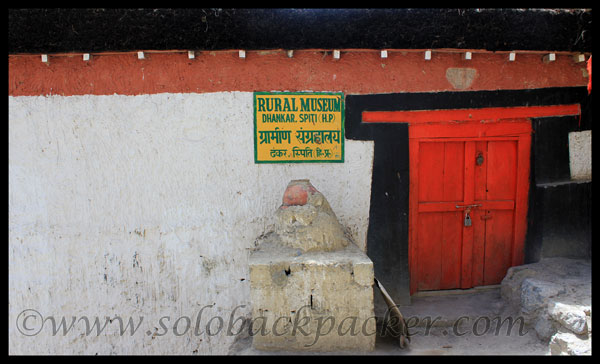
Due to the deteriorating state of the old monastery, a new monastery was build in the village. There is a newly built broad road that connects old monastery from new monastery. This road was initially made for the use of Dalai Lama during his visit to Dhankar.

Dhankar Fort:
This fort is situated just above the monastery with the main structure supported on a cliff base. It is approachable by a short climb from monastery on a narrow path. The old fort does not possess any special treasure for the travelers to immerse into historical, archeological or pure visual interest. Spiti suffered many aggressive attacks from its neighbours in the past.It was surrounded by the powerful neighbours like Laddakh, Kullu and Bushahar, who invaded this region many times.In the case of an attack, high mountains acted as a focal point to warn people about an oncoming danger. They built a huge fire on selected mountain tops and gathered people at high places called Dhankars. 300 meters above the Spiti river and situated on a mountain cliff, Dhankar became the obvious choice for these gatherings. In the meeting all men and women decided the course of action to be taken against the aggressors. Spitians generally do not preferred to fight a war. They had faith in the wisdom of Lamas in this matter. Many times they would escaped their place with all the valuables and livestock to the higher and inhabited places or sometimes they hide in the fort like Dhankar. They would wait for the winter, in which invaders would find it difficult to survive without any resources. The Spitians would then ransack the invaders. The fort of Dhankar now lies in ruins, but still is a place worthy of visit. From the remnants of the fort one can see vast expanses of the Spiti valley.

Dhankar was the capital of Spiti valley till the capital had been shifted to Kaza. The monastery, lunar landscape of Dhankar Village, Dhankar Fort all are still a proud sign of old days Dhankar, but it seems its glorious days are behind. It might have passed its golden era,but Dhankar always remain a dream destination for a traveller wandering in the Spiti Valley.
Where to Stay:
There are two guest houses and 2-3 homestays available in the village. First, we went to a homestay “Manirang Family Guest House” (Contact Mr. Anil @ +91-9418556208). At 350 INR (lodging and fooding both included), it was a very good deal. The room condition was also good. Neat and clean mattresses were strewn on the ground. There was no cot or wooden bed. But we were okay with them. Our main concern was the toilet. It was not a cemented one, but a toilet made by mud with hole in the middle. Water facility was not available there, so you had to filled the bucket outside before going to the toilet.We did not like this and went to a guest house ” Dhankar Monastery Guest House”(Contact: Parul Gupta @ +91-9418646578), which is just behind the new monastery building.
This guest house is running by the same trust, which maintains the new monastery of Dhankar. They are also the owner of Tiger Den Restaurant, where we stayed in Tabo. They asked us INR 450 per night, but after a bargain agreed on INR 400 per night. Room was very good, neat and clean and bathroom was also very good and clean. We stayed there for night and enjoyed the food also. Although Momos of the guest house was not good in taste, but dinner (Dal, Rice, Chapati) was good. In the dining area, they also displayed the masks and materials used by local people during the Chham Dance Festival, being held in July every year.
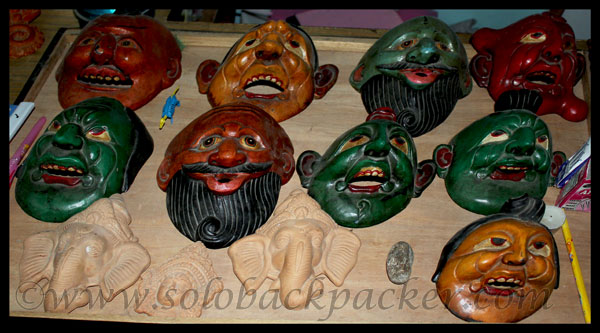
Other things to do:
1. Trek to Dhankar lake: This lake is situated in the mountain at the height of 4517 meters. A 3 kms walkable road from the village goes to the lake and takes about 2 hours.There is a dangerous straight climb option also available from the village to the lake and takes about one hour. My next post will give you a detailed information on this trek.
2. Trek to Lahlung Village (3758 meters): This village is home of one of the oldest temple of Spiti Valley,Sherkhang Temple (Elevation 3779 meters), that is famous for its nondescript stucco building, fantastic characters with wall and ceiling paintings.It said to be a 1000 years old temple. It requires a 3 hours one way easy trek from Dhankar to Lahlung.From Lahlung you can further trek to Demul, Komik and Langza villages.
3. Trek into the wilderness: Beyond Dhankar lake and Lahlung village, there are numerous trekking options available. Just prepare yourself, show some courage and lost in the wilderness of this region.


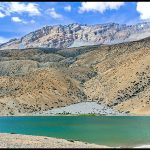
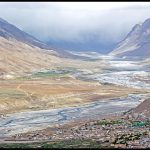
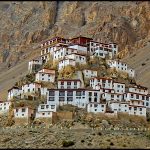
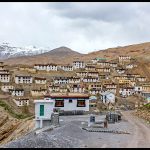
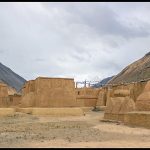
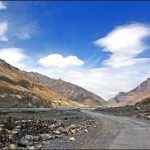
Hello sir, Greate description of Dhankar village…. I am planning to go there in aug. end this year. It would be helpful for me. Thanks. Also give suggestion for night stay at nako village.
Hi,
There are some guest houses in Nako Village on the main road itself. You can find a good accommodation there without any problem. Happy Traveling.
Hey, great travelogue and very informative. Me and some friends are also planning an independent trek in lahaul spiti. no one is free after june first week so is it okay if go in may end around 20th via shimla? or we gonna miss anything?
Hi Sakeb..Thanks for your visit..After mid-May, You can travel to Spiti Valley via Shimla and you can enjoy your treks also. Temperature will be good, clear weather and no snow in the valley. However, it is always good to go there via one route (Shimal or Manali) and come back via another one.It completes the Buddhist Circuit of Himachal Pradesh. At time of your visit, Kunzum Pass may not be open for the vehicular movement due to the snow. So, you have to return back via Shimla only. You will miss only the route between Manali and Kaza (and that is very scenic, I heard) and nothing else. However, we also missed it during our visit in mid-June, but we enjoyed Spiti Valley thoroughly. Happy Travelling. 🙂
Wonderful travelogue, enjoyed reading it and gorgeous pictures. I am myself thinking of going to Spiti in the next couple of months, your posts will help a lot. When is the best time to visit Spiti?
Thanks Arti..The best time to visit Spiti is between June to October. And Just one suggestion, as Manali-Kaza and Shimla-Kaza both routes are open now, so plan your trip via both routes. It will help you to make a complete tribal circuit in Himachal Pradesh.